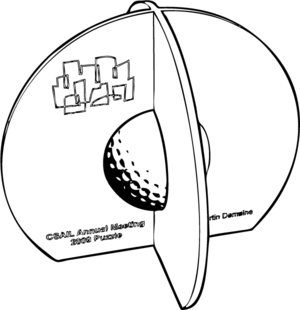
[150dpi] [300dpi] [EPS] [PDF] [AI] [DWG]
While most of our puzzles are made from paper, this one must be made from rigid (flat) material. The official version is made from acrylic with a laser cutter, but we have made some in wood also. If you're working by hand, you could cut wood with a scroll jaw. Otherwise we would recommend a laser cutter (or water-jet cutter).
This puzzle is inspired by a similar (classic?) puzzle we first saw in Japan in summer 2008. We'd appreciate learning its full origin.

| 
| 
|
| rendering by Kenny Cheung |
In an easier puzzle, you are given the pieces assembled, and your goal is to take them apart. This works well for thick material (especially wood) with the notches sized very close to the material thickness. But for thinner material this puzzle becomes a bit too easy.
The files above are sized for material approximately 3mm thick. If you use any other thickness, you'll need to adjust the width of the two thin rectangles to approximately match the thickness of the material.
The files above are sized for a golf ball in the center. Golf balls can vary slightly in size, though. Any rigid ball (e.g., hollow plastic) would work well too, but you'll need to adjust the size of the central holes. We find the results are best when the hole is only slightly larger than the ball, so that the whole construction rests snugly when built.